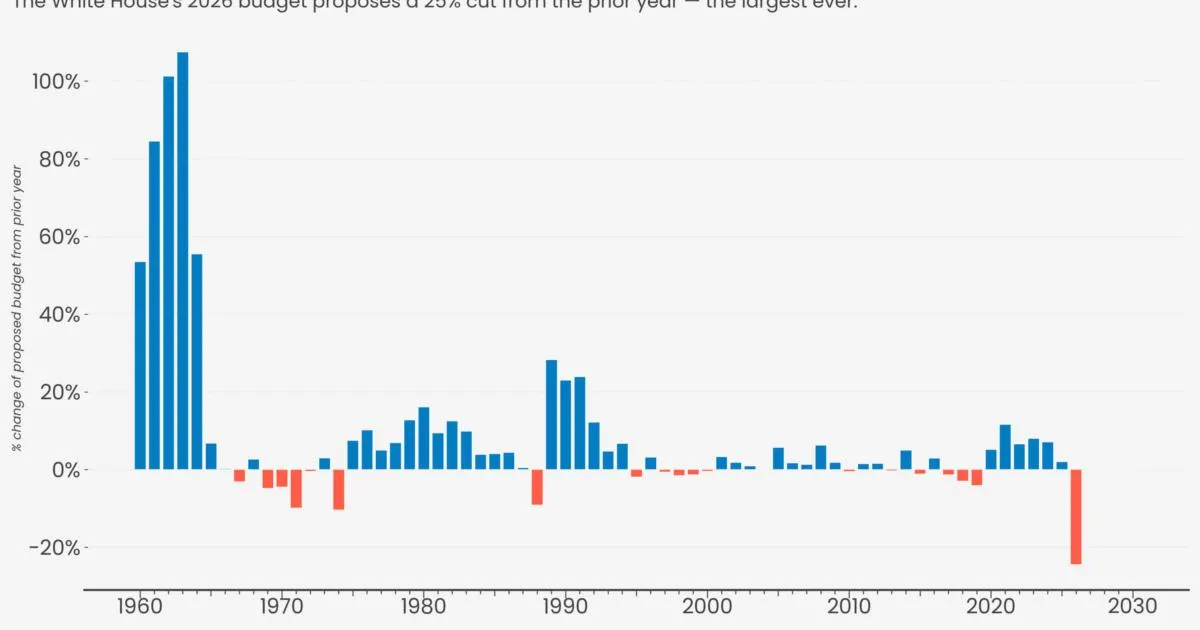
The White House's fiscal year (FY) 2026 budget proposal for NASA represents a significant and historic threat to the space agency's future. It is essential to emphasize that this assertion is backed by data. In fact, this budget proposal marks the smallest allocation for NASA since 1961, a year when no American or Soviet astronaut had yet ventured into space.
At the dawn of fiscal year 1961, the landscape of space exploration was vastly different. NASA was embarking on the nascent stages of Project Mercury, which would later facilitate the journeys of seven astronauts in individual capsules. The agency had not yet developed planetary spacecraft, space telescopes, or initiated Earth science missions. Additionally, the ambitious Apollo lunar program was still a distant dream. This historical context underscores the severity of the proposed budget cuts for NASA in 2026.
The proposed budget not only signifies the smallest allocation in decades but also represents the largest percentage cut ever suggested for NASA. The budget aims to reduce funding by nearly 25% in a single year—an unprecedented decrease since the end of the Apollo program. This cut comes at a time when NASA is charged with the monumental tasks of returning humans to the Moon and sending them to Mars. Such an ambitious agenda is bound to be compromised by a lack of necessary investment.
In addition to the budget cuts, the proposal would reduce NASA's workforce to its smallest size since 1960. The agency's civil servant workforce has fluctuated over the years, peaking during the Apollo program. Notably, during the 1990s, the Clinton administration implemented a 25% workforce reduction, a move some argue contributed to the shuttle Columbia disaster. The current budget aims to slash the workforce by nearly one-third in just one year, resulting in involuntary layoffs that would leave NASA with a workforce reminiscent of its early days before the establishment of key centers like the Marshall Space Flight Center and Johnson Space Center.
NASA is not a monolithic entity; it comprises various directorates and mission areas dedicated to science, human exploration, the space station, aeronautics, and education. The 2026 White House budget proposal seeks extensive cuts across almost every program area, with the notable exception of human exploration. Most alarmingly, the budget eliminates funding for STEM education and outreach initiatives entirely, undermining the next generation of scientists and engineers.
The Science Mission Directorate (SMD) is NASA's primary branch for scientific discovery and research, operating a diverse fleet of space-based observatories, planetary probes, and Earth-monitoring satellites. These assets play a critical role in exploring our planet and the universe beyond. The White House proposes to cut the SMD budget by nearly half, jeopardizing critical scientific research and unique capabilities that are not pursued by the private sector.
NASA comprises four mission-focused science divisions: planetary science, Earth science, heliophysics, and astrophysics. The proposed budget cuts would severely affect each division, leading to the premature termination of active missions and drastic reductions in essential scientific research. Major projects, including missions to Venus, next-generation space telescopes, Earth observation satellites, and studies of the Sun, are all at risk.
One of the most concerning aspects of the proposal is the termination of 19 active science missions, which would waste billions of taxpayer dollars. Generally, NASA does not end productive science missions, as it is financially imprudent to do so. The ongoing operational costs are minimal compared to the multibillion-dollar budget, and many missions provide unique data that cannot be replicated. For instance, the New Horizons mission, which has been exploring the Kuiper Belt for 20 years, would lose its funding, resulting in a generational gap in data collection capabilities.
Ultimately, Congress holds the reins on federal spending in the United States. While this budget proposal poses a significant threat to NASA, it is not an unavoidable destiny. U.S. citizens still have the opportunity to engage with their congressional representatives to reject this harmful proposal. For more details and actionable opportunities to advocate for NASA science, visit our Save NASA Science action hub.